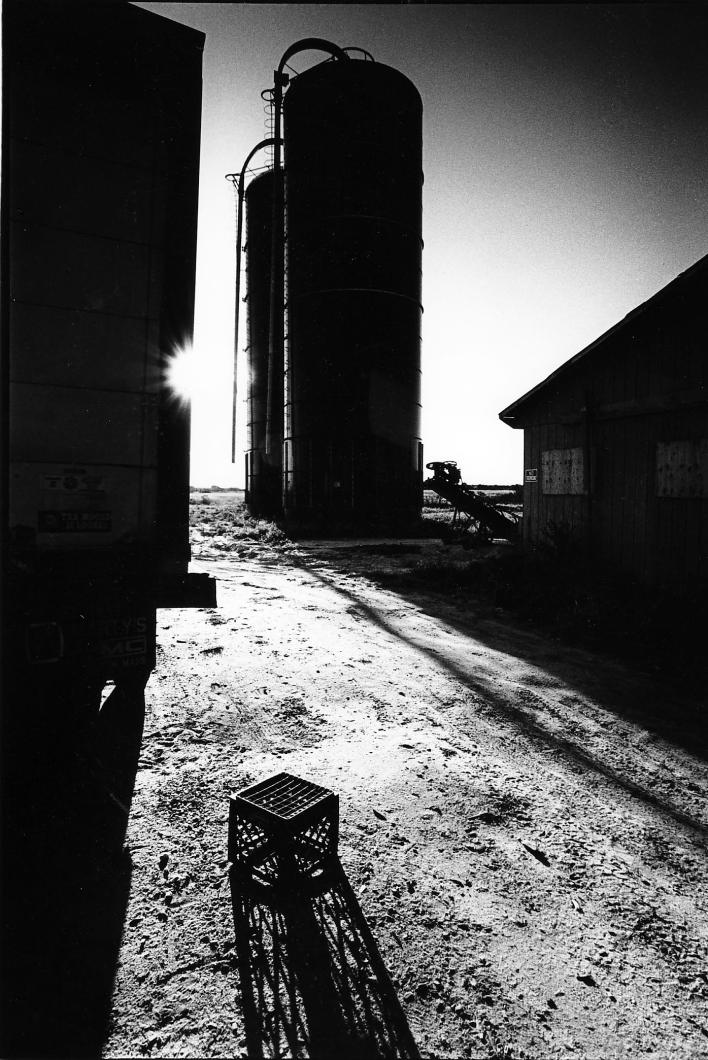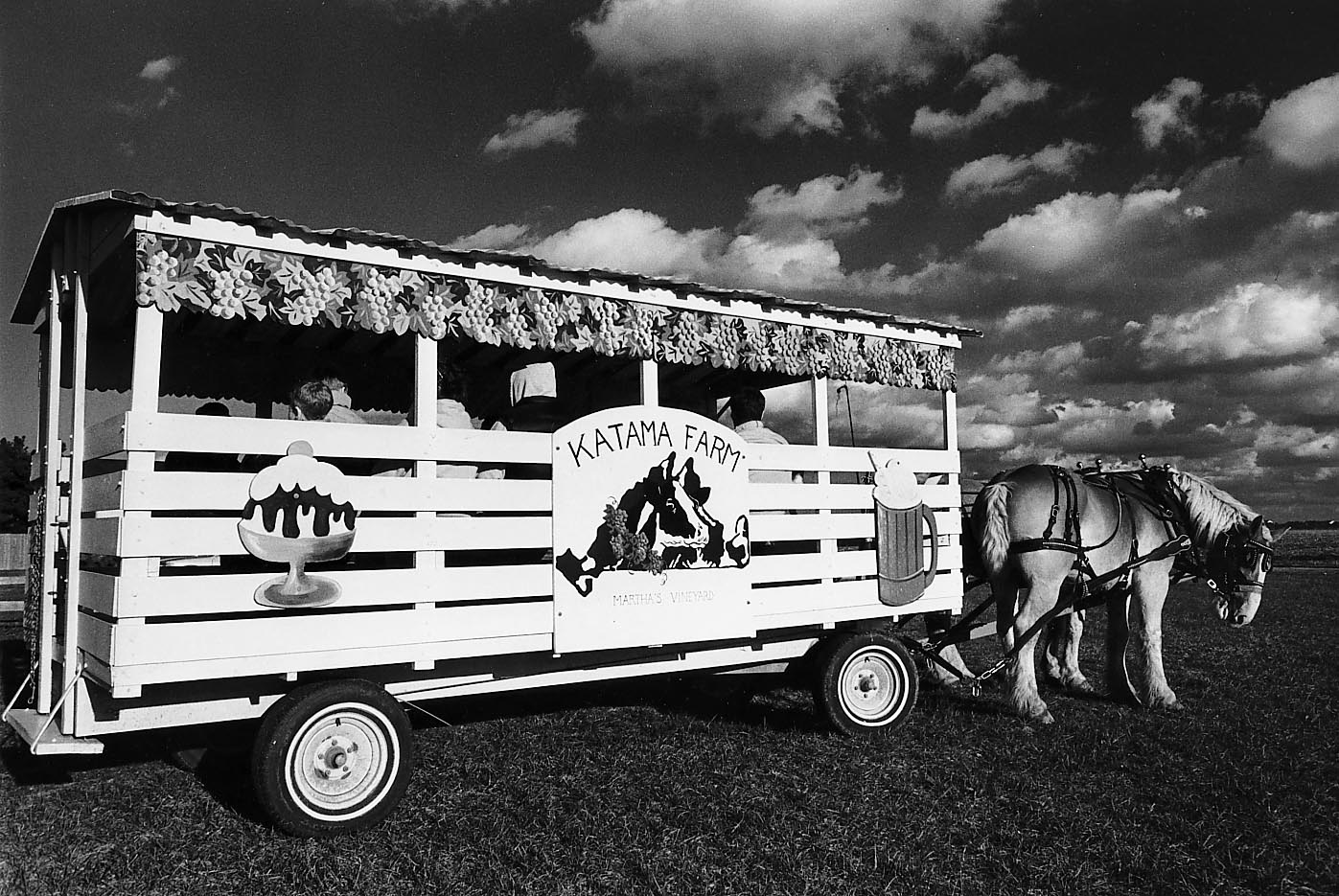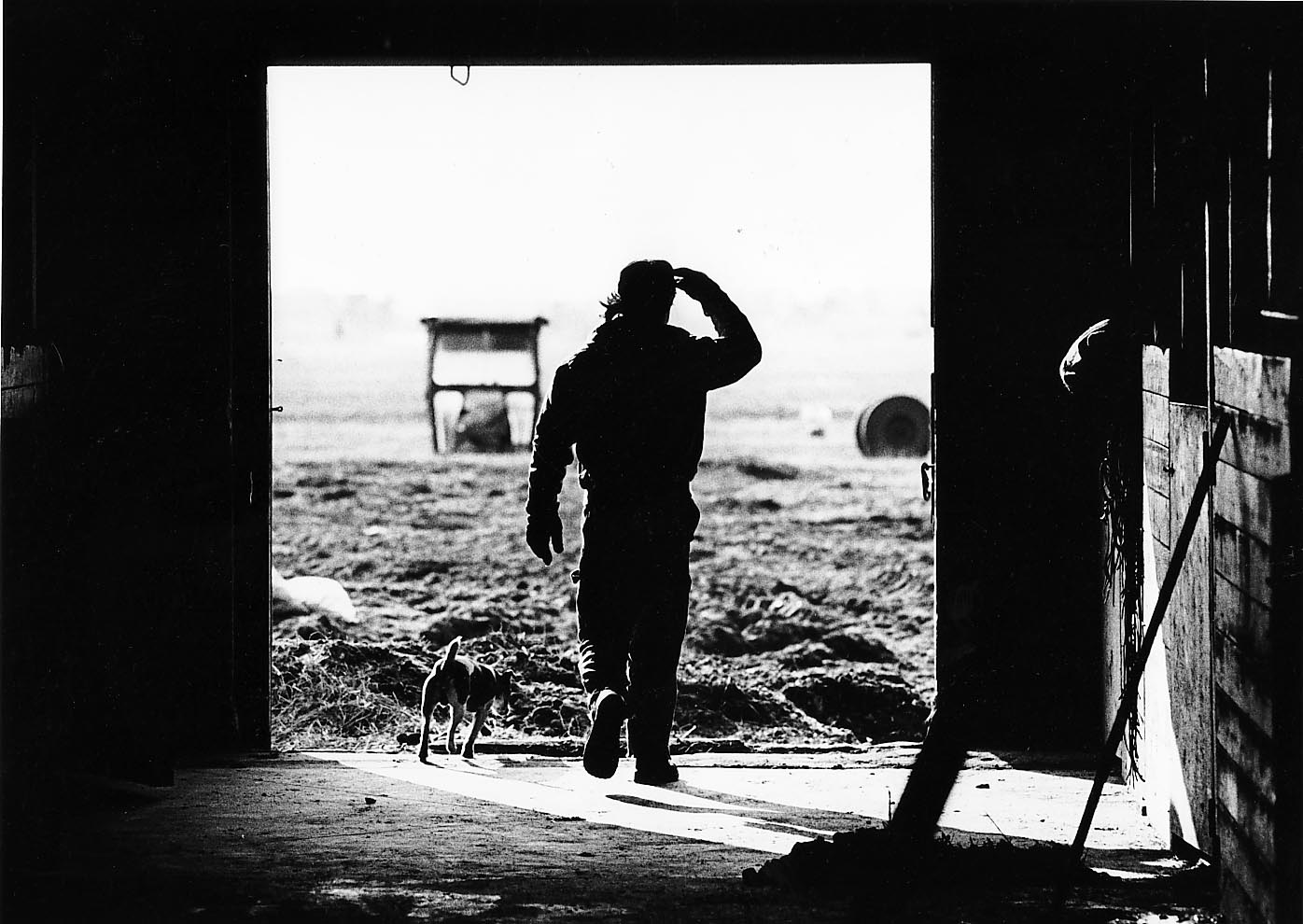As the story goes, the history of farming at Katama began in the first World War when Edgartown families planted army and navy beans deep in the rich soil there. Yet maps of the Island which date from 1862 show fences bordering the land, indicating that agricultural use of the land can be traced to an even earlier date.
And so the history of farming on Katama Farm, 220 sweeping acres west of Katama Road, is a long one. It is a history sprinkled with moments of triumph and times of sadness. The land has been home to sheep and horses, more than one dairy farm and rows upon rows of grain and corn.
Nearly lost to development 29 years ago, it exists today as a working, educational farm for the community — especially children — but memories abound of the fight to keep it as a farm.
“Yeah, I farmed that for quite a few years,” said Elisha Smith who, at 85, is one of the oldest living farmers on the Vineyard. Back in the early 1920s, Mr. Smith recalled, the property was divided into a series of small housing lots. When Arthur Hillman bought the property for $5,000 in the 1930s, no houses had yet been built.
Mr. Hillman brought sheep to the property and grazed them on the northern fields. Frederick A. Paris took over the operation sometime after and Mr. Smith first worked the soil there under his supervision.
“It was way back when I first started working in Edgartown, when I was 15 or 16. That was in the thirties,” Mr. Smith recalled. “There was a man out there by the name of Paris that was raising sheep, about 600 back there. It was ’38 when they were building that great barn and then the hurricane came, but it didn’t knock that thing down.”
Mr. Paris left the farm after three years and in 1943, Mr. Smith bought it and a second parcel to complete the tract of land recognizable today as Katama Farm. He brought with him six dairy cows and sowed the fields for corn and potatoes, rye, oats and hay. Annual harvests of 3,000 bushels of corn or 40 tons of hay from the rich soil were not unusual.
“Katama Farm is quite a resource because it has the Katama loam out there,” said Jim Athearn, owner of Morning Glory Farm in Edgartown. “It’s good stuff and it really responds to growing things.”
Mr. Smith began a dairy collaborative which at its peak boasted some 30 Island dairy farmers. But by the 1960s, the number of farmers in the collaborative had dwindled to four or five. In 1964, Mr. Smith sold the farm.
Eventually, the property landed in the hands of the Strock family, which intended to carve it into more than 700 buildable lots. When Strock Enterprises went bankrupt in 1977, the land was suddenly owned by a Boston bank.
“It’s one of the finest pieces of farmland in Massachusetts, without a doubt,” said Robert Woodruff, former executive director of the Vineyard Conservation Society. “There’s hardly a piece of land out there that’s as stone-free and organic. It has a deep topsoil. It is class one.”
When he learned of the uncertain fate of the property in 1977, Mr. Woodruff, who was conservation society executive director at the time, picked up the telephone.
“I called up Edo Potter, she was on the [Edgartown] conservation commission at the time, and I said, ‘Edo, what are we going to do? It’s going to get marketed,’ ” Mr. Woodruff said. “We called ourselves the committee-to-try-to-do-something. We were all of the mind that something had to be done.”
The initial group included Mrs. Potter and Robert Jackson, then president of the Katama Association. The group began to raise money and soon the ranks swelled to include town selectmen and summer residents, businessmen and even a Gazette reporter. In six weeks they raised nearly $50,000.
“It was interesting because we had all the various groups. All the do-gooders and all the bad boys, we got together and produced that,” said Robert J. Carroll, an Edgartown businessman and former selectman known for his outspoken opinions. “It was one of those things that was in the common good and we realized we could do it if we did it together.”
“It was a rather extraordinary, unusual putting together of people on this committee,” said Mrs. Potter, a former selectman who owns Pimpneymouse Farm on Chappaquiddick. “There were conservationists and developers all there in the same room and what fascinated me was that they all wanted the same thing. They remembered it as a farm and I think that’s what made the difference. People had contact with it before. They had worked there and they didn’t want to see it turn into houses.”
The group made an initial offer, which the bank rejected, but after months of negotiating and even more fund-raising, the bank accepted a second offer of $340,000 for the 220 acres. The proposal went before Edgartown voters at their annual town meeting and was approved. In 1979, the town joined with the Massachusetts Executive Office of Environmental Affairs to buy the property. It was a deal which involved the cooperation of the state, the town, the Vineyard Conservation Society, the Katama Farm Committee and the Vineyard Open Land Foundation. The Edgartown conservation commission became the landlord and the property would be leased to farmers and used to promote agriculture, conservation and passive recreation.
The effort was lauded around the Island. An editorial in the Gazette placed it “under the legendary heading of things too good to be true.” But establishing a successful working farm on the property proved to be much more tricky.
Stephen Potter, Mrs. Potter’s son, was the first tenant, with Seaside Dairy. Mr. Potter raised a herd of Holsteins and bottled up to 1.5 million pounds of milk per year. The milk became a familiar presence in Island grocery stores. The dairy also made cheese. But after six years, Mr. Potter shut down the operation in the face of mounting debt. A second dairy farmer followed, but was also unsuccessful. He left the farm after a few years; in his wake stood unplanted fields, buildings in poor repair and rusting junk cars. A third farmer also tried and failed. Finally, three years ago the conservation commission found a new tenant.
The Farm Institute, a young nonprofit organization founded in 2000 to educate and engage children and adults in sustainable agriculture, was picked from a pool of three finalists. The institute, which had been operating nearby on part of the Herring Creek Farm, signed a ten-year lease for 162 acres of the farm.
“We had been existing on seven and a half acres,” said Sam Feldman, an original founder. “We could only have 12 children in a classroom at a time originally. We were limited in the events we could have and we couldn’t do much on weekends.” From their new home, the institute was able to substantially expand their offerings. They started new programs, including a wee farmers program for preschoolers and an apprenticeship program for high school-aged farmers. In the summer of 2005, the farm enrolled 140 campers. Last summer, over 1,000 students enrolled.
In addition to educating future generations, the institute collaborates with current farmers. This summer it will lease land to Mr. Athearn and Andrew Woodruff of Thimble Farm. In exchange, Mr. Woodruff allowed the institute to use his greenhouse last winter. And institute farmhands can often be seen down the road at Mr. Athearn’s farmstand.
The new home has also allowed the farm to carry out the mission of that original committee-to-try-to-do-something.
“The buildings were in bad shape when we got here. The land had not been fertilized or taken care of for many years. The farm was really down on its heels,” Mr. Feldman said. So the farmers began to restore the property, repairing the buildings and tilling the soil. One building which received much attention was the old barn Elisha Smith finished after the hurricane of 1938.
“When we got there, it was abandoned,” said Rob Goldfarb, development director for the Farm Institute. “The doors wouldn’t shut and the rain would come through.” The farm is now seeking funding to complete their restoration of the barn so it can function as a working, learning space for students year-round. “The building is an instrumental icon to the Island. Yes it’s just wood and cement, but it’s held peoples’ lives,” Mr. Goldfarb said.
“If anyone had asked me 30 years ago how Katama Farm would end up being utilized, I never would have guessed the Farm Institute,” said Mrs. Potter. “I think it is the most wonderful thing that’s ever come to Edgartown.”
Institute leaders credit the foresight of the people who put the original deal together to buy the farm. “What they recognized back then is that it was a unique and special part of the community. They were willing to act to make it stay that way so future generations could have access to it,” said farm executive director Matthew Goldfarb. “It’s a special place to be. It’s a beautiful place, knowing that it will be protected in perpetuity and we’re just one of the players in its long and hopefully productive future.”
This is not lost on those who fought to save it.
“I drive by there every once in awhile and think, Jesus. That was a good one,” Mr. Carroll said.
This column is meant to reflect all aspects of agricultural activity and farm life on the Vineyard. To reach Julia Rappaport, call 508-627-4311, extension 120, or e-mail her at jrappaport@mvgazette.com.









Comments
Comment policy »